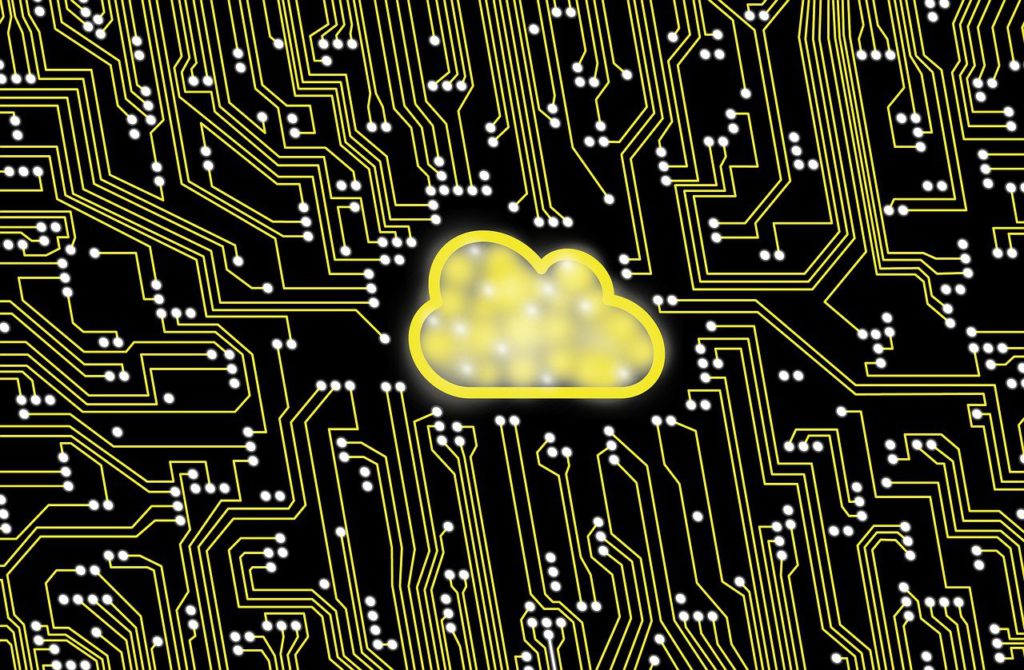Cloud solutions and security
Key Points of Cloud security generally refers to the measures taken to protect digital assets and data stored online through cloud service providers. Cloud computing security or, more simply, cloud computing security refers to the broad set of policies, technologies, applications, and controls used to protect virtualized IP addresses, data, applications, services, and their associated cloud computing infrastructure. Cloud security solutions are typically deployed and used to secure workloads running both in private clouds and cloud computing companies’ leading public cloud services.

Cloud security suites can include features from both cloud workload and CASB technologies to help provide a complete set of cloud access security and deployment features. There is also a wide range of cloud-based software-as-a-service (SaaS) security tools and technologies to protect both cloud and on-premises workloads.
Cloud security offers all the features of traditional IT security and allows companies to take advantage of many of the benefits of cloud computing while maintaining security and meeting data privacy and compliance requirements. Cloud security provides user and device authentication, data and resource access control, and data privacy protection. A critical component of cloud security is the protection of corporate data and content such as customer orders, classified project documents, and financial records.
In all types of public cloud services, customers are responsible for protecting their data and controlling who can access it. Most cloud service providers can try to avoid cloud security issues with the services they offer, but they have no control over how customers use the service, what data is added, and who has access.
Using a Cloud Service Provider (CSP) can introduce additional security concerns regarding data jurisdiction because the customer or tenant data may not be stored in the same system, data centre, or even the same provider’s cloud. The widespread use of virtualization in the implementation of cloud infrastructure creates security issues that are unique to customers or tenants of a public cloud service.
Traditional cybersecurity focuses on protecting the perimeter, but cloud environments are tightly coupled, which means that insecure application programming interfaces (APIs) and account compromise can create real problems. Key cloud security threats include data leakage, data loss, account hijacking, service traffic hijacking, insecure application program interfaces (APIs), insufficient choice of cloud storage providers, and common technologies that can compromise cloud security. New cloud security threats are typically associated with newly discovered exploits found in applications, operating systems, virtual machine environments, and other network infrastructure components. There are several security risks associated with cloud data services.
With the right security measures in place in the cloud, users can securely access data and applications in the cloud, no matter where they are or what device they use. Third-party audits of the cloud provider’s security systems and procedures help keep user data secure. Professional cloud security assessments and penetration testing are critical to ensuring that cloud service providers comply with government regulations and protect your valuable data responsibly. Cloud security consultants study how a company processes and stores data, and then create its own data management protocol for end-to-end protection.
The core of any third-party cloud service is the provider that manages the physical network, storage, data servers, and desktop virtualization platforms. Responsibilities for managing cloud segments, including security, are shared between the customer and the provider. Protecting your online infrastructure requires the efforts of cloud service providers and the customers who use them, whether they are individuals, SMBs, or enterprises. Security responsibilities that always rest with customers include managing users and their access privileges (identity and access management), protecting cloud accounts from unauthorized access, encrypting, and protecting assets based on data in the cloud, and managing its security state (compliance).
Customer Security Responsibilities To integrate the CSP security controls listed above, customers are typically responsible for applications, middleware, virtualization, data, operating system, network, and runtime security in IaaS clouds. Companies using cloud services need to be clear about which security responsibilities they place on their providers and which they must manage themselves to avoid gaps in coverage. Cloud Service Providers (CSPs) have developed security skills and toolkits over the past decade and, as a standard part of their services, enforce border protection between tenants (so, for example, a customer cannot view another customer’s data). Organizations migrating to the cloud move data to the cloud without understanding the scope of the operation, the security controls used by CSPs, and their responsibility to enforce security controls.
The result is a significant investment in cloud-based security protocols that keep corporate data safe from hackers and breaches. Users and organizations use SaaS applications to gain more space on their computers, improve security in the cloud, easily update software, and sync data across multiple devices.
While cloud service providers such as Amazon Web Services (AWS), Microsoft Azure (Azure), and Google Cloud Platform (GCP) offer many cloud-based features and security services, additional third-party cloud solutions are required to provide cloud security. enterprise-grade workloads from hacks, data breaches, and targeted attacks in the cloud. Complex environments Continuing security in today’s preferred hybrid and multi-cloud environments requires methods and tools that work seamlessly between public and private cloud providers and on-premises deployments, including branch edge protection for organizations’ geographic deployments.
It is critical that organizations have complete confidence in the security of their cloud computing and that all data, systems, and applications are protected from data theft, loss, corruption, and deletion. How to protect your data in the cloud The steps required to secure your data in the cloud vary.




